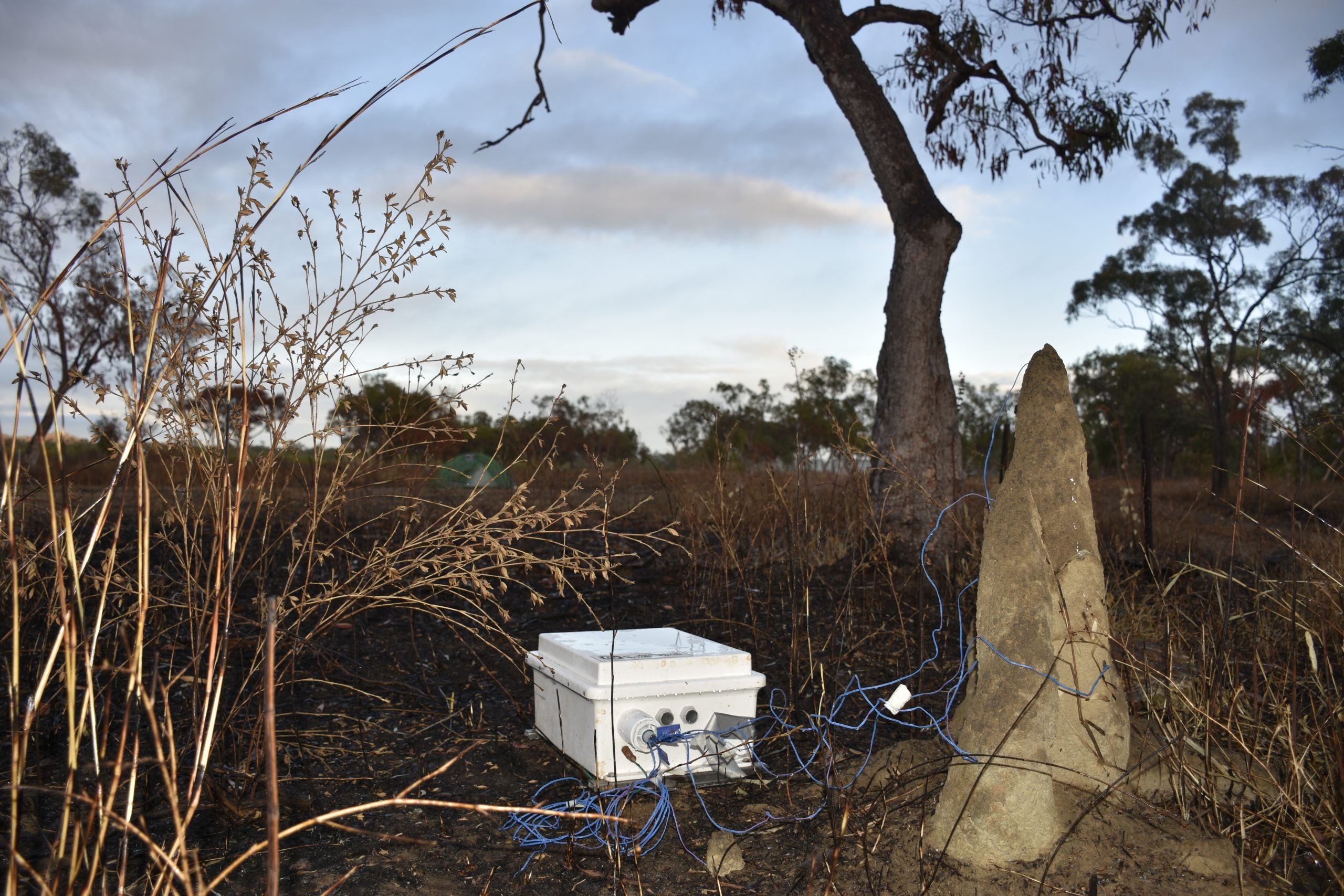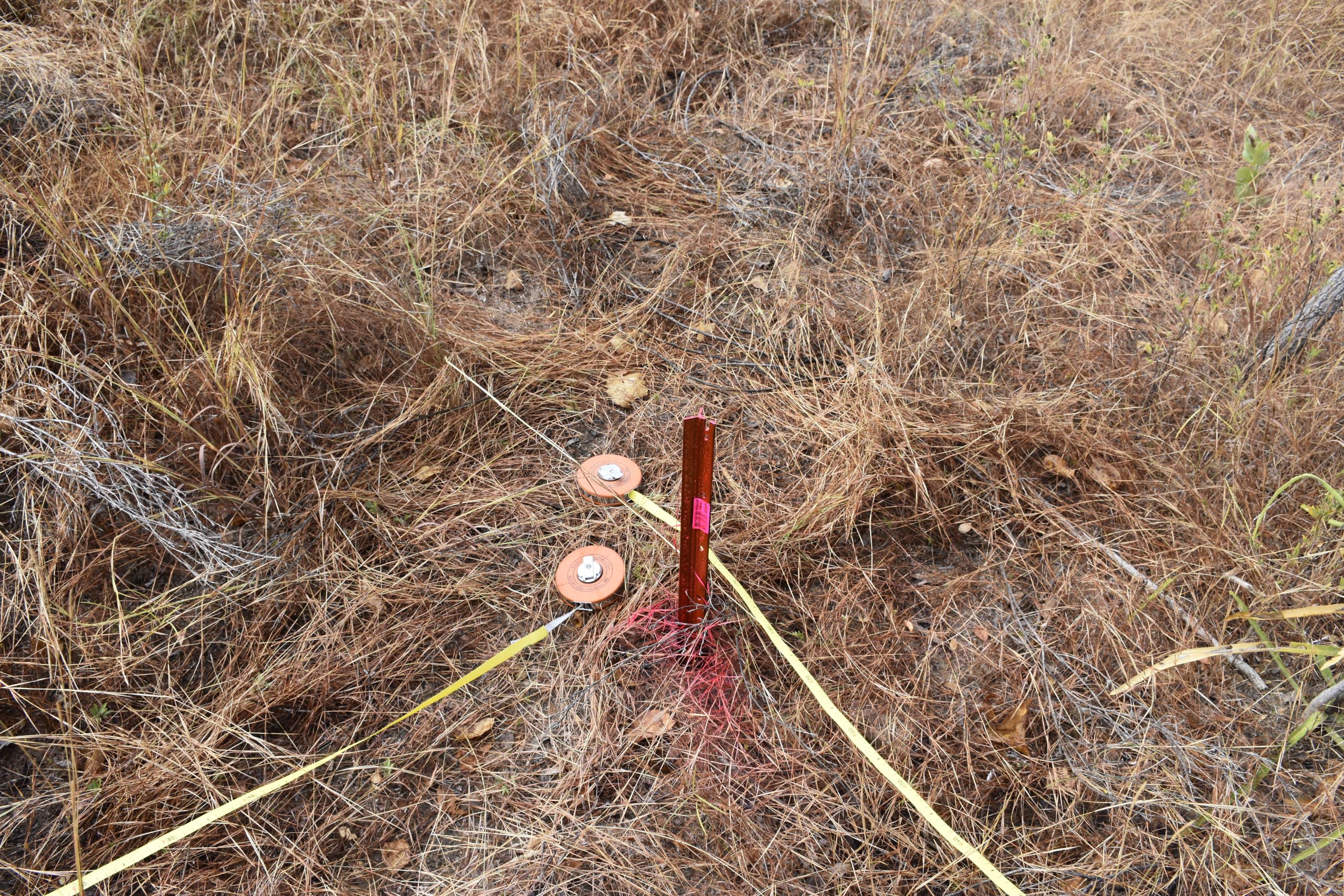Why include an artist in a science project?
In the Lab: Collecting sawdust from FNQ field research decaying wood samples to extract DNA sequences to analyze microbial activity in decaying tropical deadwood. Image taken at James Cook University Lab, Smithfield Campus June, 2019. Image courtesy of the artist.
Curiocity Brisbane returns this winter to transform the cultural heart of Brisbane city over 17 days of immersive science, art and technology.
Award winning artists, scientists, engineers, designers, students and storytellers have created 20 physical and digital installations, known as Curiocity Artworks, that will challenge and delight visitors of all ages.
Curiocity Brisbane 2022 artist Donna Davis is inspired by art/science residencies. So, what exactly does a cross collaborative residency like this involve?
My work is inspired by residencies where I am embedded as an artist within environmental research projects, exploring science through a creative lens; interpreting data and discussions from field and lab research into works that imagine futures and construct new ways of “seeing” complex ecological systems and human roles within them.
As an artist-in-residence, Donna has worked with entomologists, mycologists, ecologists, microbial ecologists and mathematicians to create the Curiocity Brisbane artwork DE-CAY-dence. This involved physical field and lab work in tropical North Queensland along with virtual residency experiences.
How did this influence your Curiocity Brisbane 2022 artwork?
This artwork was created in response to an art-science residency embedded within current environmental research project: The Wood, Termite & Fungi Project. This is an international research project, led by University of Miami, studying tropical deadwood carbon fluxes, in order to improve current carbon models used for climate forecast modeling. This project combines field, molecular, and modelling approaches in tropical Australia, where termites and fungi are key agents of wood turnover.
Why do we want to know where carbon ends up? What is the environmental message from your artwork?
Carbon is essential for life on Earth: it can change form from solid to gas. Carbon is stored in the wood of forest trees, when trees die their wood is eaten by organisms such as microbes and termites, and the carbon is released back into the atmosphere as gases. These gases contribute to the carbon cycle, an essential process to sustain life on Earth, but it also impacts global warming and climate change.
Global warming forecasts come from ecosystem models or climate models. These climate models are made up of huge amounts of data from scientists from all over the world who feed their research data into the models to capture a holistic model of the earths ecosystems and how this will affect climate change forecasts.
What data is this project feeding into the model? Why is this important?
This project is measuring the relative roles of microbes and termites in tropical wood decay.
Once trees die, carbon is freed from the wood by organisms such as microbes and termites. The tropics have vast stores of carbon in trees but little is known about where that carbon ends up. Both microbes and termites are critical in decaying tropical wood but which one does the job will alter how fast and in what form the carbon is released ie either carbon dioxide or methane.
How do the scientific collaborators benefit and grow through art/science residencies?
Dr Amy Zanne from the University of Miami says that working with Donna “allows us to communicate information about our research in different formats, moving beyond words and graphs. Her captivating visuals are accessible and compelling, allowing us to reach a much broader audience. Additionally, when working with Donna our conversations cause me to reflect on our research, as I describe and discuss the science behind the project with Donna. It has been a fascinating journey together as I think through our work and hers.”
Visit the artwork page to read more about Donna Davis’ artwork DE-CAY-dence and all 20 installations that will be free to explore from 24 June to 10 July 2022 as part of Curiocity Brisbane.

In the Lab: Abbey Yatsko and Donna Davis drilling decaying wood samples from the field to collect sawdust for data analysis on microbial activity. Image taken at James Cook University Lab, Smithfield Campus June, 2019. Image courtesy of the artist.

In the Field: Measuring temperature inside and outside termite mounds. Image taken at Pennyweight Station, FNQ June, 2019. Image courtesy of the artist.

In the Field: Sectioning off grids within the field research sites to find out what termite species were present and document their activity. Image taken at Pennyweight Station, FNQ June, 2019. Image courtesy of the artist.
Collaborators on The Wood, Termite & Fungi Project: University of Miami (Lead Research Organisation) and George Washington University, USA; The Natural History Museum London, UK (Collaborating Research Organisation); University of California, Irvine, USA (Collaborating Research Organisation); National Science Foundation (NSF), Office of International Science and Engineering, USA; Natural Environment Research Council, UK (NERC); Royal Botanic Gardens, Sydney; Australian Tropical Herbarium, Cairns; Smithsonian Natural History Museum, DC; National Arboretum, DC; Missouri Botanic Gardens, Missouri; Rainforest Rescue, Cape Tribulation; and Australian Wildlife Conservancy
The Wood, Termite & Fungi Project is an international collaboration between scientists in the U.S., the U.K. and Australia, and is supported, in part, by the NSF Office of International Science and Engineering. The project will also support education and training of junior scientists. The project will include training at the graduate student and postdoctoral levels, and is part of an international collaborative effort with scientists in England funded by the United Kingdom’s Natural Environment Research Council (NERC).

